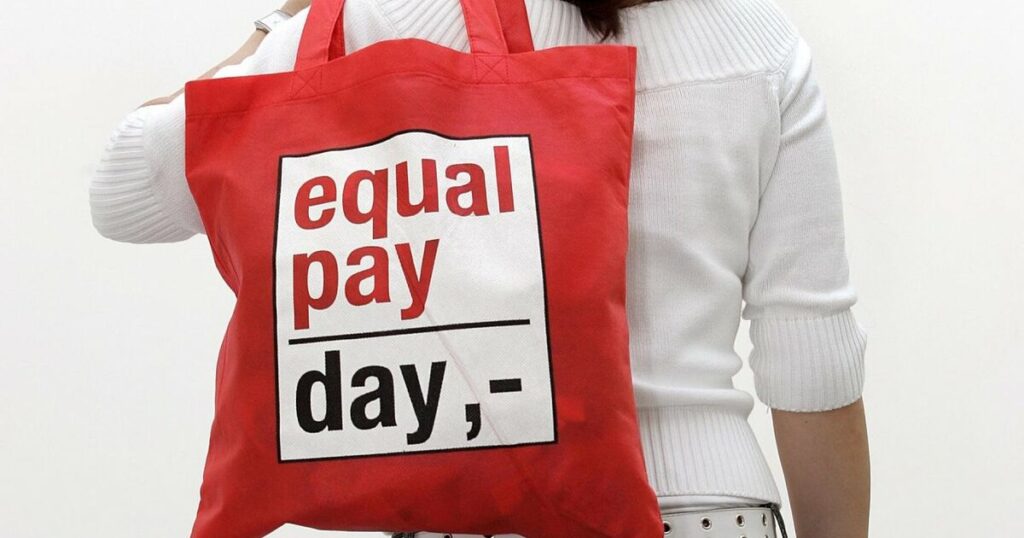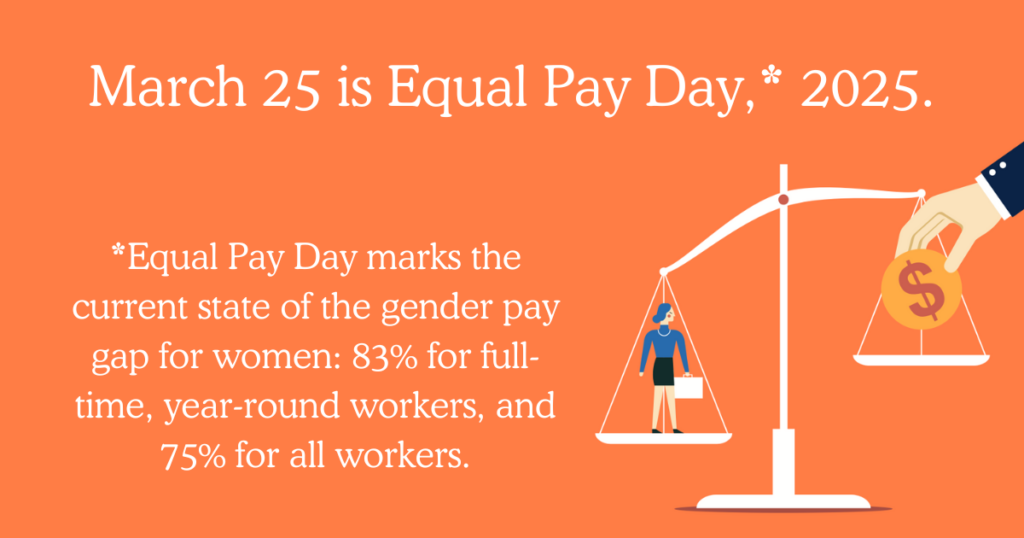Pay Equity is an AAUW Priority

AAUW is a leader in research and advocacy for women’s equal pay and workplace opportunities. Here are some AAUW resources on pay equity:
- The Simple Truth about the Gender Pay Gap (2025 Update)
- Gender Pay Gap by State
- “Equal Pay: Transparency Matters, letter to the editor, Seattle Times, March, 2025
The first official Equal Pay Day was in 1996. It called out the “gender pay gap” because it highlighted the difference between what a woman was paid for the same job and hours worked, compared to a man for the same job. We could do this because we had standardized demographic data.
Today in addition to the Pay Gap, we track Lifetime Loss of Income and Savings due to the wage gap and the “catch-up” age, the age at which a woman’s career earnings catch up to a man’s.
The National Women’s Law Center’s pay gap data shows lifetime wage gaps, state by state, and by other categories. This data helps us better understand the long-term significance of the pay gap and why social services and financial education continue to be so important to women.
Washington State Pay Gap, Lifetime Loss and Catch-up Age
- Overall, women earned 79 cents for every dollar earned by a man.
- The overall life-time loss was $658,720.
- The overall catch-up age was 70 years old: A woman would need to work ten extra years, until age 70 years, to match the earnings of a man at age 60 years.
The Pay Gap Varies by Location
- The pay gap range by Washington State congressional districts was 75 cents to 89 cents.
- The pay gap range by Washington county was 45 cents to 91 cents.
The Pay Gap Is Worse for Women of Color
The national AAUW Equal Pay Day Calendar reminds us of these differences.
Our AAUW-WA report illustrates the wide disparity in not just the pay gap, but also lifetime loss and catch-up age.
- The pay gap by race/ethnicity* varied from 52 cents to 91 cents.
- The lifetime loss varied by $313,84 to $1.634,320.
- The Catch-up Age varied from 64 years old to 97 years old.
Join Us!
AAUW-WA will be working with its members and leaders, as well as community leaders and policymakers, to better understand the Gender Pay Gap in Washington State. To join the conversation, please contact publicpolicy@aauw-wa.org.
Updated May 20, 2025

